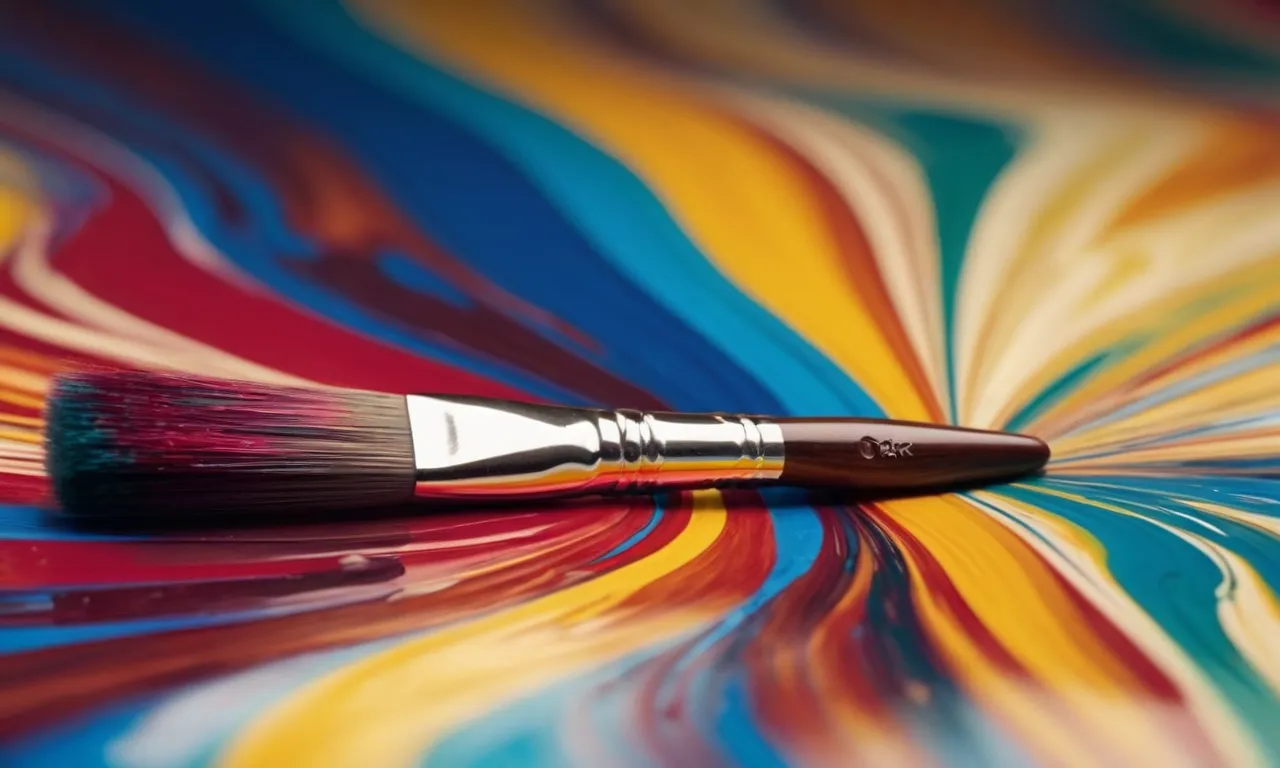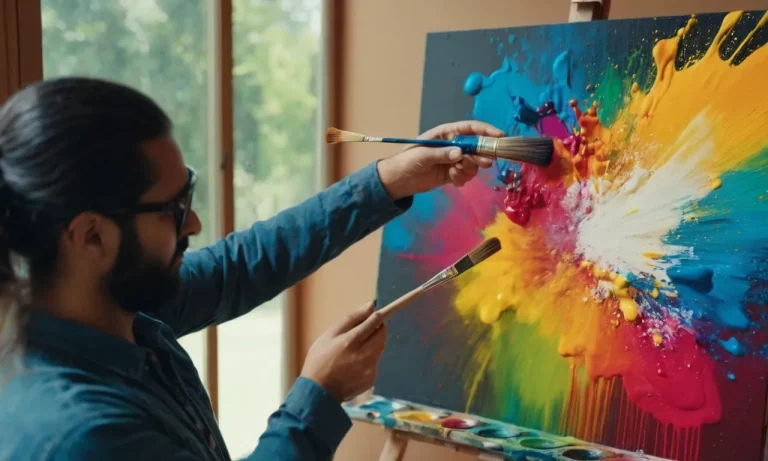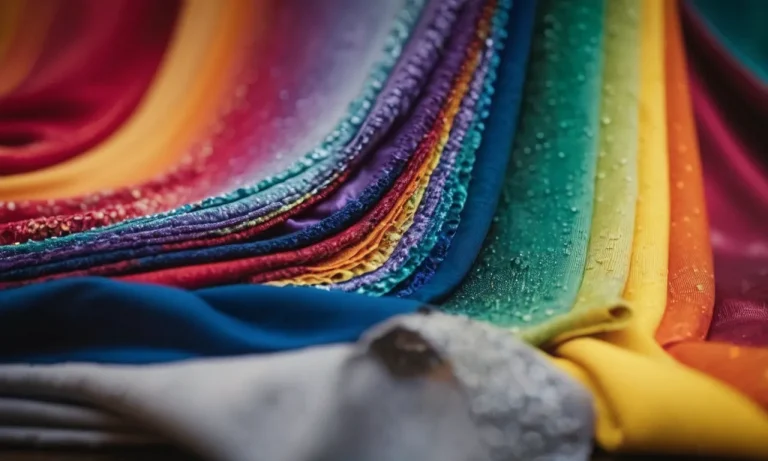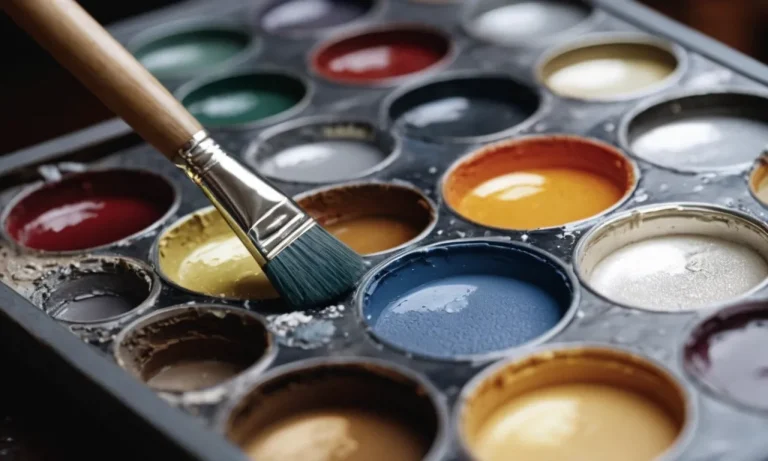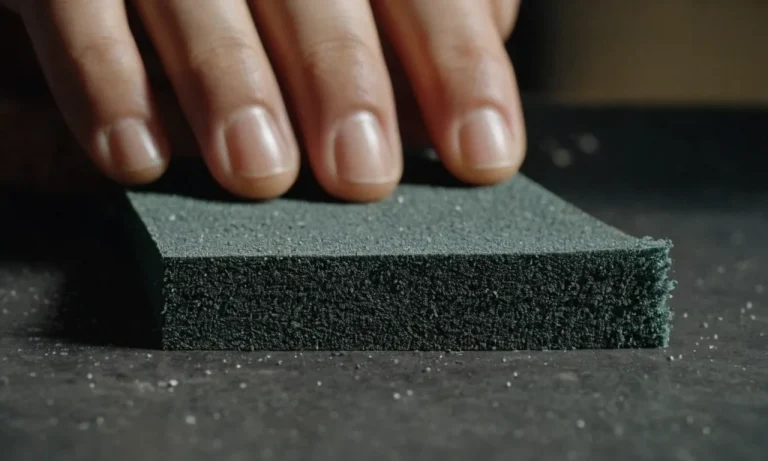How Long To Stir Paint: A Detailed Guide
If you’ve just cracked open a fresh can of paint, you may be wondering: how long do I really need to stir this before I start painting? Properly mixing paint is an important step that can make or break your paint job, so read on for a deep dive into how long you should stir paint to get optimal results.
If you’re short on time, here’s a quick answer: you should stir paint for 2-5 minutes before initially using it, and 1-2 minutes before each subsequent use. But keep reading to learn exactly why stirring is so crucial and how factors like paint type, thickness, and age impact stir time.
Why Proper Stirring is Crucial
When it comes to painting, proper stirring is a crucial step that should not be overlooked. Whether you are painting a room, a piece of furniture, or any other surface, taking the time to stir the paint thoroughly can make a significant difference in the final result.
Here are some reasons why proper stirring is so important:
Ensures Even Color Distribution
One of the main reasons why you should stir paint is to ensure even color distribution. Paint consists of pigments, binders, solvents, and other additives that can separate over time. If you don’t stir the paint properly, you may end up with uneven color on your walls or furniture.
This can be especially noticeable with darker colors or when using multiple cans of paint.
By stirring the paint thoroughly, you help to mix all the ingredients together, ensuring that the color is consistent throughout. This will result in a more professional-looking finish and prevent any patchy or streaky areas.
Achieves Proper Paint Consistency
In addition to achieving even color distribution, proper stirring also helps to achieve the right paint consistency. Different types of paint have different consistencies, and stirring helps to blend all the components together to create a smooth and workable paint.
If the paint is not stirred properly, it may be too thick or too thin, making it difficult to apply evenly. This can lead to brush or roller marks, drips, or an inconsistent finish. By taking the time to stir the paint thoroughly, you can ensure that it has the right consistency for easy application and a professional-looking result.
Integrates Separated Ingredients
Over time, the ingredients in paint can separate, with heavier components sinking to the bottom of the can. This can result in a layer of clear liquid on top of the paint, which is known as “painter’s milk.”
If you don’t stir the paint well, you may end up with this separated liquid on your brush or roller, affecting the quality of your paint job.
Stirring the paint properly helps to integrate these separated ingredients back together. This ensures that you are using the paint as it was intended, with all the components working together to provide the best coverage and durability.
Remember, proper stirring is not a step to be rushed through. Take the time to stir the paint thoroughly, following the manufacturer’s instructions, to achieve the best results. It may seem like a small detail, but it can make a big difference in the overall outcome of your painting project.
How Long to Stir Based on Paint Type
When it comes to painting, stirring the paint thoroughly is essential to ensure a smooth and even finish. The amount of time required to stir the paint can vary depending on the type of paint being used. Here is a detailed guide on how long to stir based on the paint type:
Latex/Acrylic Paint
For latex or acrylic paint, it is recommended to stir for at least two minutes. This will help to distribute any settled pigments and ensure that the paint is properly mixed. If the paint has been sitting for a while, it is even more important to stir it thoroughly to achieve the desired consistency.
A good rule of thumb is to stir until the paint has a smooth and uniform texture.
Oil-Based Paint
Oil-based paints require a bit more time and effort to properly stir. It is recommended to stir oil-based paint for at least five minutes. This is because oil-based paints tend to have a higher viscosity and can separate more easily.
By stirring for a longer period of time, you can ensure that the pigments and binders are evenly distributed throughout the paint, resulting in a more consistent finish.
Primer
When it comes to stirring primer, the time required is typically similar to latex or acrylic paint. Stir the primer for at least two minutes to ensure that it is well-mixed and ready to be applied. Primer serves as a base coat and helps to improve the adhesion of paint to the surface.
By stirring the primer thoroughly, you can ensure that it is properly mixed and ready to provide a smooth and durable foundation for your paint.
Remember, the time mentioned above is a general guideline, and it is always a good idea to refer to the manufacturer’s instructions for specific recommendations. Properly stirring the paint will greatly contribute to the overall quality of your painting project, so don’t rush this important step.
Stir Time Variables
When it comes to stirring paint, several variables can affect the amount of time needed to achieve the desired consistency. Understanding these variables will help you determine the optimal stir time for your paint.
Paint Thickness
The thickness of your paint can significantly impact the time required for stirring. Thicker paints, such as oil-based paints, may require more time and effort to achieve a smooth and even consistency. On the other hand, thinner paints, like water-based acrylics, may require less stirring time.
It’s important to note that the thickness of paint can vary between different brands and types. Therefore, always refer to the manufacturer’s instructions regarding stir time recommendations.
Age of Paint
The age of your paint can also play a role in the stir time required. Over time, paint can separate, with the pigments settling at the bottom of the container. If your paint has been sitting for a while, it’s essential to thoroughly stir it to redistribute the pigments and ensure a consistent color.
Keep in mind that the age of paint can vary, so it’s advisable to check the manufacturer’s guidelines or recommendations for stir time based on the paint’s age.
Amount of Paint
The amount of paint you have will impact the stir time needed. If you are working with a small quantity of paint, it may require less time and effort to achieve the desired consistency. Conversely, larger quantities of paint may require more thorough stirring to ensure that all pigments are evenly mixed.
It’s worth noting that stirring paint in smaller batches can help ensure better results, as it allows for more precise control over the consistency.
For more detailed information on stir time recommendations specific to different brands and types of paint, you can refer to trusted sources such as paint.org or sherwin-williams.com.
Stirring Methods
Using a Stir Stick
One of the most common and traditional methods for stirring paint is by using a stir stick. This method is simple and straightforward, requiring only a few basic materials. To stir paint using a stir stick, follow these steps:
- Ensure that the paint can is properly sealed before opening it.
- Use a clean stir stick made of wood or plastic.
- Insert the stir stick into the paint can and slowly stir the paint in a circular motion.
- Continue stirring until the paint is thoroughly mixed and has a consistent color and texture.
- Once you’re done stirring, remove the stir stick from the paint can and wipe off any excess paint.
Using a stir stick is a reliable and cost-effective method for stirring paint. It allows for precise control over the mixing process and is suitable for small to medium-sized paint projects.
Mixing with a Drill Attachment
For larger paint projects or when time is of the essence, using a drill attachment can be a more efficient option. A drill attachment, such as a paint mixer, can quickly and effectively blend the paint. Here’s how to use a drill attachment to stir paint:
- Attach the paint mixer to the drill following the manufacturer’s instructions.
- Ensure that the paint can is securely sealed before opening it.
- Place the paint mixer into the paint can, making sure it is fully immersed.
- Turn on the drill at a low speed to avoid splattering the paint.
- Mix the paint by moving the drill attachment up and down and side to side within the paint can.
- Continue mixing until the paint is well-blended and has a consistent color and texture.
- Once you’re done stirring, turn off the drill and carefully remove the paint mixer from the paint can.
Using a drill attachment can save time and effort, especially for larger paint projects. However, it is important to exercise caution and follow the manufacturer’s instructions to ensure safety.
For more information on stirring paint and other painting techniques, you may visit www.diynetwork.com.
Signs Paint is Properly Mixed
Properly mixing paint is crucial to achieve the desired color and consistency. When paint is not mixed well, it can result in uneven color, lumps, and an overall poor finish. To ensure that your paint is properly mixed, look out for the following signs:
Uniform Color and Sheen
One of the first signs that paint is properly mixed is a uniform color and sheen. When paint is mixed correctly, it should have a consistent color throughout the entire container. This means that there should be no streaks or variations in color.
Additionally, the sheen of the paint should be consistent, whether it is a matte, satin, or glossy finish.
Smooth, Lump-Free Consistency
Another sign that paint is properly mixed is a smooth and lump-free consistency. When paint is not mixed well, it can contain clumps or lumps that can affect the application and finish of the paint. To check for a smooth consistency, use a stir stick to scoop up some paint from the container.
The paint should flow easily off the stick without any clumps or lumps. If you notice any clumps or lumps, continue stirring until they are fully incorporated.
Paint Clings to Stir Stick
When paint is properly mixed, it should cling to the stir stick. This is an indication that the pigments and binders in the paint have been thoroughly mixed together. To check for this, dip the stir stick into the paint and slowly lift it out.
If the paint adheres to the stir stick and does not drip off immediately, it is a good sign that the paint is properly mixed.
Remember, it is important to follow the manufacturer’s instructions when stirring paint, as different types of paint may require different mixing techniques. If you are unsure, consult the paint can or the manufacturer’s website for specific guidelines.
Conclusion
Taking the time to properly stir paint may feel tedious, but it’s an easy way to help ensure you get smooth, consistent, quality results. Follow the guidelines above on stir times for different paint types and situations. And don’t forget to remix paint between coats or after taking a break.
Happy stirring!

